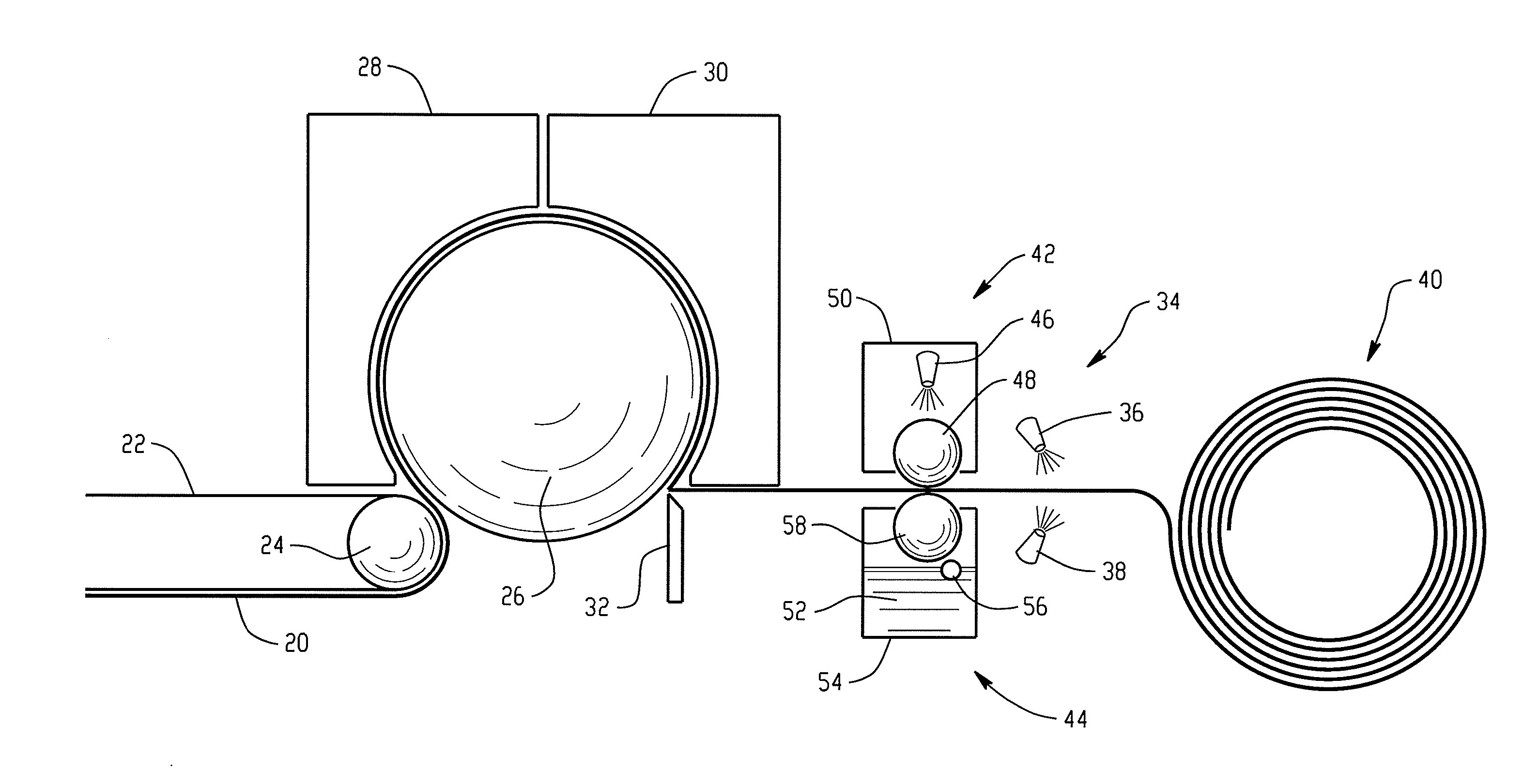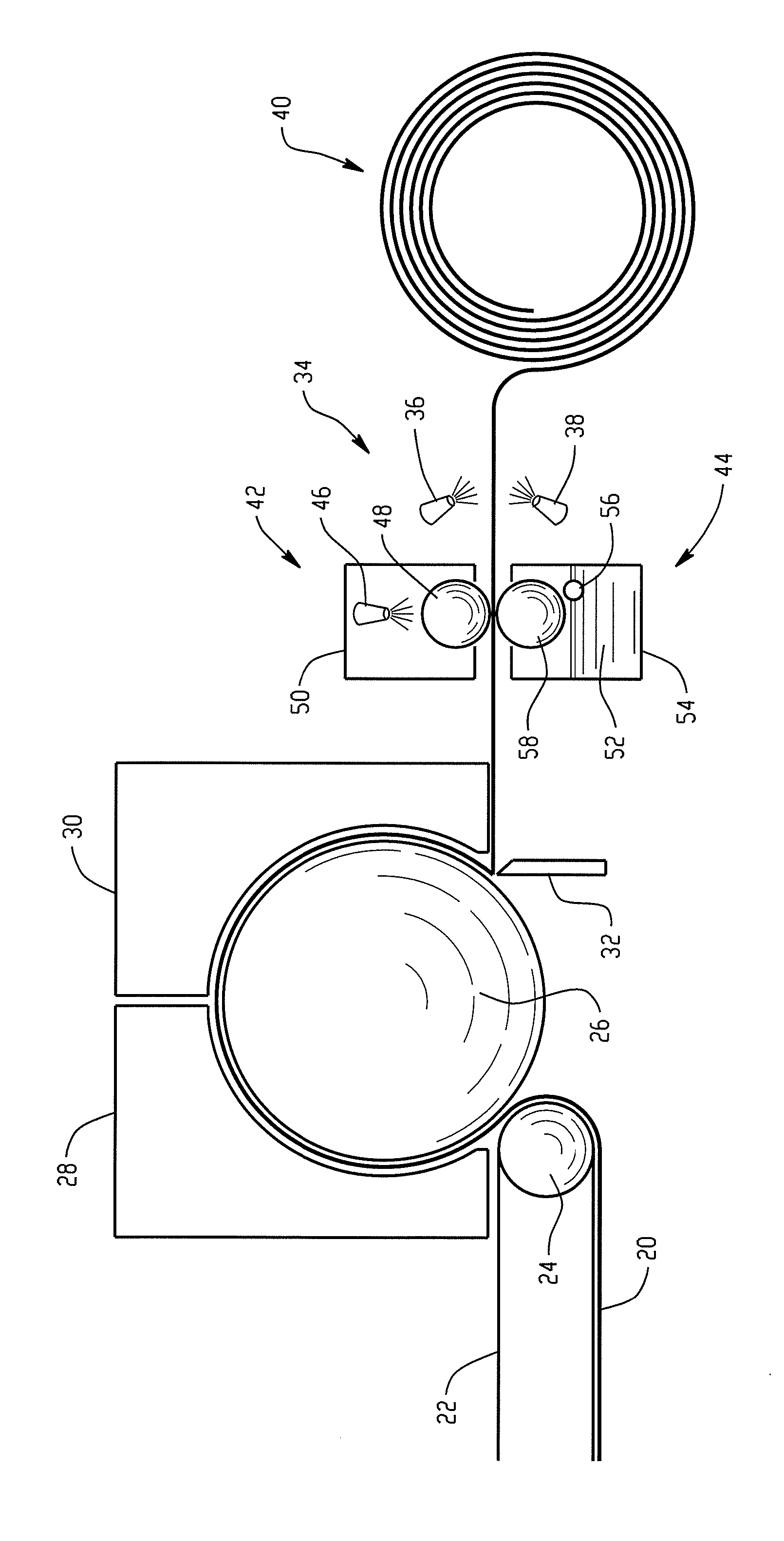Method Of Applying Fugitive Hydrophobic Treatment To Tissue Product
a technology of hydrophobic treatment and tissue products, applied in the field of tissue products making, can solve the problems of imposing limitations on other additives, affecting the effect of tissue production, so as to achieve the effect of effectively incorporating reactive sizes and preserving tactile and aesthetic properties of the tissu
- Summary
- Abstract
- Description
- Claims
- Application Information
AI Technical Summary
Benefits of technology
Problems solved by technology
Method used
Image
Examples
example
[0079]Alkenyl ketene dimer (Basoplast® brand supplied by BASF) is dissolved in Carnation mineral oil in an amount of 10% by weight. The admixture is heated to 45° C. and sprayed onto a previously formed tissue sheet in such an amount that 0.9 kg (2 pounds) of AKD are applied per tonne (ton) of tissue. A first portion of the resulting tissue is then tested at 10, 40 and 70 seconds after the first contact between the sheet and the water to evaluate the water contact angle of droplets applied to either surface of the sheet—without any intervening process. A second portion of the resulting tissue is then “cured” in an oven at 105° C.
[0080]Surprisingly, it was found that curing at elevated temperature is not required to impart significant barrier properties with the “uncured” sheet possessing significant hydrophobicity, particularly on the surface to which the AKD emollient mixture was applied. Equivalent results were obtained when the procedure was repeated using propylene glycol as the...
PUM
| Property | Measurement | Unit |
|---|---|---|
| temperature | aaaaa | aaaaa |
| temperature | aaaaa | aaaaa |
| temperature | aaaaa | aaaaa |
Abstract
Description
Claims
Application Information
 Login to View More
Login to View More - R&D
- Intellectual Property
- Life Sciences
- Materials
- Tech Scout
- Unparalleled Data Quality
- Higher Quality Content
- 60% Fewer Hallucinations
Browse by: Latest US Patents, China's latest patents, Technical Efficacy Thesaurus, Application Domain, Technology Topic, Popular Technical Reports.
© 2025 PatSnap. All rights reserved.Legal|Privacy policy|Modern Slavery Act Transparency Statement|Sitemap|About US| Contact US: help@patsnap.com



